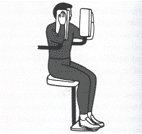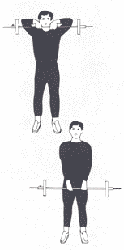|
Post season, after a suitable period or rest and recreation, is the right time to start to strengthen those weaknesses. If you race, you get very little time to do specific training, so this short period between end of season and the time for on the bike training is vitally important to the racing cyclist, or any cyclist who  wants to ride further and faster the following year. This is the time of the year for strength or weight training. wants to ride further and faster the following year. This is the time of the year for strength or weight training. 
There are some who claim weight training is not necessary, it doesn't train the muscles in the same way as riding the bike, there are other who advocate the use of weight training all year. Surely if you are stronger that transfers to your cycling! For those who remain sceptical however we will also include some strength training techniques for on the bike.
Strength or weight training usually involves a gym or fitness centre and there are hundreds available. Try to find one that has trainers who at least understand the training needs of cyclists. Your first 'port of call' is probably a heart-searching assessment of your strengths and weaknesses and a trainer who understands cycling can certainly help with this assessment.
Most cyclists have a poorly developed upper body; therefore all elements of the upper body will need work. But legs, back and stomach should all be worked on to take you to that next stage in your personal development.
Please remember that unless you are a track cyclist you're not out to build a huge muscle mass, you do not want to become a Mr Universe on wheels. Through weight training you are looking to:
|